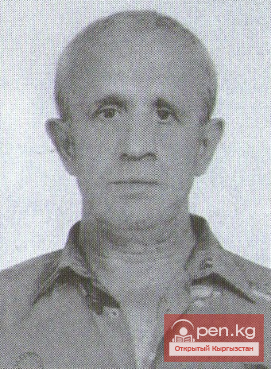
In February, winter arrived. Bishkek was buried in snow and frozen by the cold. It was night. The...

12 Facts About Flights You Need to Know Airlines are a big business, which means big money and,...

Guest House "Moryachka" on Issyk-Kul The guest house with the telling name...

Russia is ready to share its experience in teaching religious culture in schools with Kyrgyzstan...

At ten thirty, our mini-plane landed, and we were flying over the Kalahari once again. From this...

If you have a transit flight through Singapore Changi Airport or just some time before your...

The Director of the Tourism Department of the Kyrgyz Republic, Azamat Zhamankulov, spoke at a...

The dance group from Kyrgyzstan "Tumar" has reached the semifinals of the show "You...

“Eles” We are glad to welcome you to the guest house! Here, you will always be warmly greeted in...

Guest House "Labyrinth" on Issyk-Kul The guest house "Labyrinth" is...

Guest House "Maksat" on Issyk-Kul Cholpon-Ata is not only the most visited and the most...

The symbol and calling card of Cape Town is considered to be Table Mountain. I read somewhere that...

Guest House "Adilet" on Issyk-Kul. The cozy and comfortable guest house...
The dance team "Tumar KR" brilliantly passed the casting on the TNT channel, which took...

History of Pegasus Asia...

It is very hot and stuffy on the plane, and outside the window, it is deep night. We are flying...

A resident of Balakchy, Azamat Janaliev, has set himself an ambitious task – to walk across 5...

The hero was awarded by local authorities for his bravery...
In Bishkek, an accident occurred the day before, resulting in the death of a small child, reported...

Ponomaryov Alexey Yakovlevich Born in 1943. Graduated from Tashkent Polytechnic Institute....

A new car has appeared in Kyrgyzstan, designed from scratch by local craftsmen from the design...

Kyrgyzstan is a favorite destination for many tourists around the world, with thousands of people...

Electronic airline ticket (e-ticket) is essentially no different from a regular paper ticket. The...

Over the past five years, the number of serviced flights at OJSC "Manas International...

It is no secret that Kyrgyz people are among the most hospitable in the world. The nomads, who...

Countries that earn income from the tourism industry are concerned about a sharp decline in...
Military personnel of the Armed Forces of the Kyrgyz Republic marched in a solemn parade across...

Flight Tips Choose alternatives to flying. First of all, airplanes emit a lot of harmful...

We arrived in Puerto Princesa by plane from Manila. The runway, flat as a table and paved with...

It was winter. February was unusually warm, with rain falling so lightly that it was hardly felt....
Takhir Tashirov, a resident of the village of Iskra in the Chuy region, demands that law...

Guest House "Kut Ordo" on Issyk-Kul “Kut Ordo” is a cozy and quiet guest house located a...

Anna Semyonovna Kramaryova has turned 100 years old — the teacher of Chingiz Aitmatov. Anna...

Asian Championship Qualifiers in Football (U-19) in Bishkek Kyrgyzstan suffered a heavy defeat to...

We arrived in Kuala Lumpur in the evening. The airport is a true metropolis, consisting of an...

Village2019k The Village2019k guest house with a garden is located in the city of Karakol. You can...

An Expert Supported the Government's Idea to Create a New Agency The decision to create a...
An unusual incident occurred on the road when a pedestrian unexpectedly stepped onto the roadway,...

Today in the Semenovskoye Gorge of the Issyk-Kul region, at the "Kyrchyn" pasture, where...

Another one of the most beautiful gorges in Kyrgyzstan, Kegety Gorge is located on the northern...

Billiards is one of the most popular sports in our country, both at the amateur and professional...

The summit of the Cooperation Council of Turkic-speaking States was a demonstration of the unity...

Manual Espresso Maker If coffee and morning are synonymous for you, don’t give up on your pleasant...

ARTICLE IN THE NEWSPAPER ABOUT THE OPENING OF THE HOUSE OF SANITARY ENLIGHTENMENT IN THE CITY OF...
In Karakol, located in the Issyk-Kul region, Vadim Arkhipov works as a computer science teacher who...
In Serbia, in the city of Novi Sad, the youth world wrestling championship for athletes under 23...

HOW ALDAR ACQUIRED A HORSE The people's word about Aldar's exploits, his cunning and...

The airport in Manila is as crowded as an anthill. There are a huge number of flights. The...